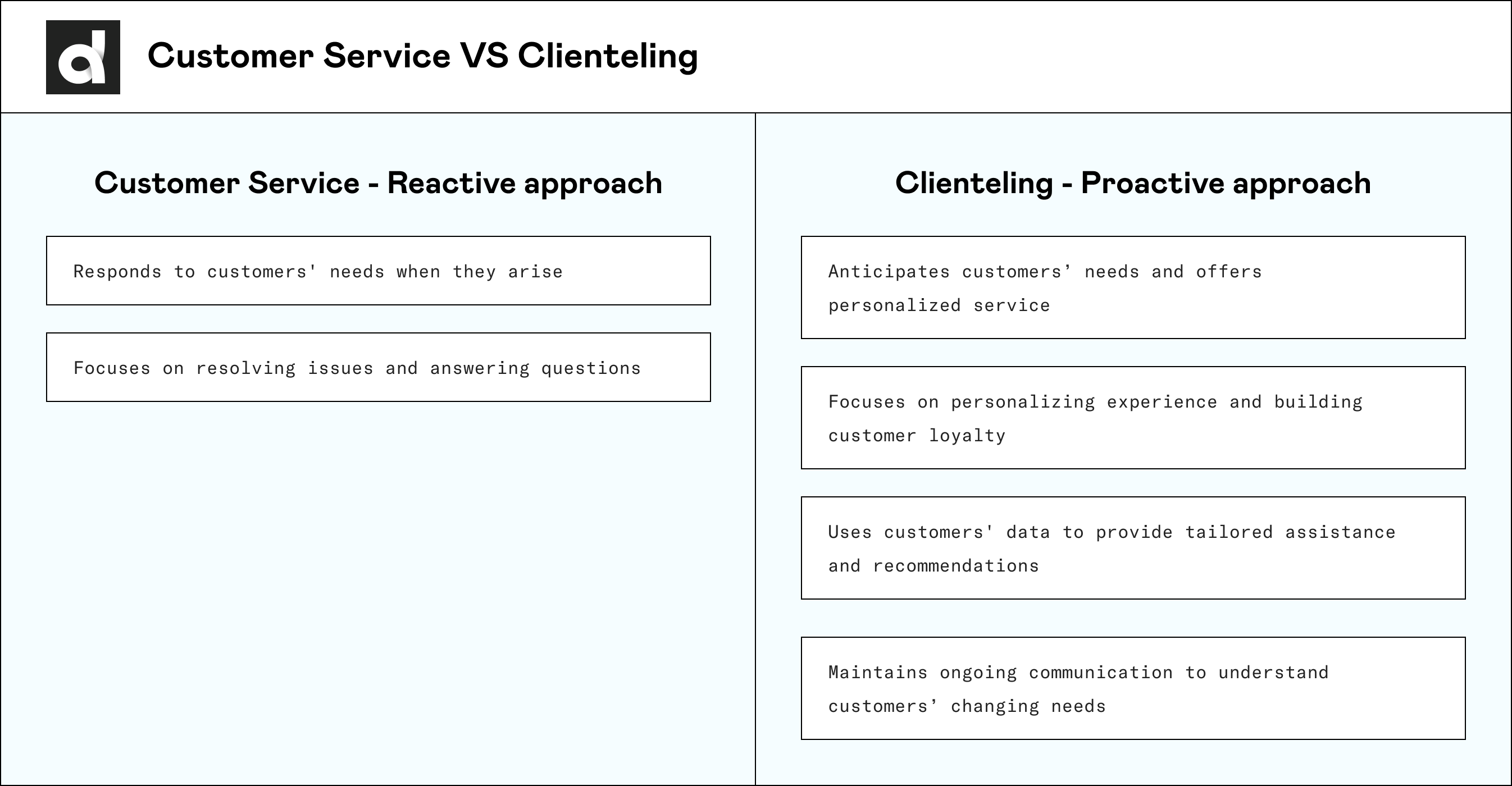Clienteling VS Customer Service: What Is The Difference
April 17th, 2023 · Written by Anna Kondrasheva

Contents
In the world of retail, two concepts are often used interchangeably: clienteling and customer service. However, despite their similar objectives, the two have significant differences.
Clienteling and customer service are two distinct approaches to customer interaction, and understanding the difference between the two can have a profound impact on the success of a business. While clienteling and customer service are essential for building and nurturing long-term customer loyalty, they involve distinct approaches, tools, and techniques.
What Is The Difference Between Customer Service And Clienteling

Simply put, customer service is reactive, addressing issues as they arise, while clienteling is proactive, anticipating customer needs and providing personalized assistance. But there are more differences to point out:
Customer Service:
- Customer service is a reactive approach that responds to customers' needs when they arise. It is focused on providing timely support to customers who have questions or problems with a product or service.
- When a customer contacts customer service, the representative's primary goal is to resolve the issue or answer the question as quickly and efficiently as possible.
- The primary function of customer service is to resolve issues and answer customers' questions. Customer service representatives are trained to handle various issues, from product defects to billing inquiries and returns.
Clienteling:
- Clienteling is a proactive approach to customer interaction that focuses on building long-term customer relationships. Rather than waiting for customers to contact them with questions or issues, clienteling means reaching out to customers and collecting data to anticipate their needs and provide personalized service.
- Clienteling relies on data to understand customer preferences, buying history, and behavior to provide personalized service. This might include making tailored recommendations for products or services based on a customer's past purchases or offering exclusive deals and promotions.
- Clienteling data helps provide a higher level of service tailored to each customer's unique needs. By offering personalized shopping experiences, clienteling can help to incentivize customers to make additional purchases and build long-term relationships with them.

Sales team reviewing a customer profile on a clienteling app
How Does A Brand Determine If Clienteling Software Is The Right Solution For Their Needs
In today's highly competitive retail landscape, businesses constantly search for ways to increase customer satisfaction and loyalty. One approach that has gained significant attention in recent years is clienteling software.
This powerful tool allows brands to gather customer data and preferences, analyze them and personalize their shopping experience, ultimately, driving more sales. However, as with any investment, it's essential to determine whether clienteling software is the right solution for your brand's specific needs before making the leap.
Answering these questions will help a brand decide if clienteling software is the right solution for their needs, and if so, what specific features and capabilities they should look for in a solution.
- Do you have a large customer base that requires personalized attention?
- Do you collect customer data (such as purchase history and preferences) that can be leveraged to provide more personalized experiences?
- Are you looking to improve customer retention and loyalty?
- Do you want to provide a more seamless and personalized shopping experience across all channels (such as in-store, online, and mobile)?
- Are you looking for a more efficient way to manage and track customer interactions and follow-ups?
- Do you want to give your sales associates the tools they need to deliver exceptional, personalized customer service?
- Are you looking for a way to measure and analyze the impact of your clienteling efforts on customer retention and sales?
- Do you have the budget to invest in clienteling software and the infrastructure needed to support it?
- Are you willing to invest in staff training to ensure successful adoption and usage of the software?
Lastly, it is essential to recognize that clienteling and customer service play crucial roles in establishing a successful customer interaction strategy.
Whether striving to become the go-to brand or simply looking to boost your bottom line, knowing how to navigate these two critical components effectively is essential for any business to thrive in today's competitive landscape.
Have a project in mind?
Join our newsletter!
Get valuable insights on the latest digital trends, strategies, and developments in China and globally delivered straight to your inbox.